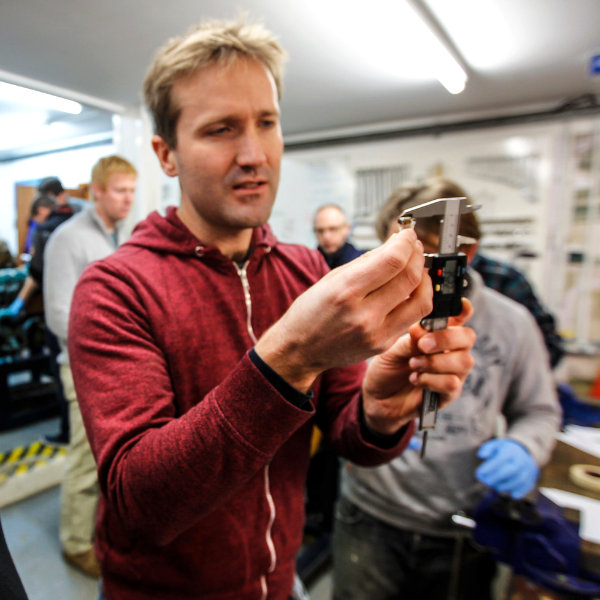
STCW Basic Safety Training Course
Essential training for all seafarers
The STCW Basic Safety Training course is the legal minimum requirement for anyone looking for commercial work aboard vessels over 24 metres, including Superyachts and Cruise ships.



About the basic safety training course
As well as the four core modules, we have now included the Proficiency in Security Awareness module as part of our course, at no additional cost to you. Although it is not an essential requirement of the course, as of 1st January 2014 all seafarers must receive approved security awareness training.
The STCW Basic Safety Training course includes
- Personal Survival Techniques (A-VI/1-1)
- Fire Fighting and Fire Prevention (A-VI/1-2)
- Elementary First Aid (A-VI/1-3)
- Personal Safety and Social Responsibility (A-VI/1-4)
- Proficiency in Security Awareness (A-VI/6-1)
Examination and assessment
Continual practical assessment with theory based examinations.
Some of the course elements include:
- Understand life-saving appliances and control plans onboard
- Demonstrate the ability to assist passengers en route to muster and embarkation stations
- Understand mustering procedures
Those interested in this course should also speak to a course advisor at the time of booking.
Training towards
- STCW Basic Safety Training Certificate (STCW Code A-VI/1)
- Proficiency in Security Awareness (STCW code Reg A-VI/6-1)
Prerequisites
The ENG1 is not a pre-requisite to this course, however, it is required to work on yachts over 24m – more information about this can be found here. Any concerns over their ability to gain a full Commercial Endorsement should seek advice from the MCA Medical Administration Team – please find their contact details below.
MCA Medical Administration Team – [email protected]/02380 329247
Syllabus
Personal Survival Techniques (A-VI/1-1)
Essential sea survival training to deal with a range of emergency situations. Includes the launch of a life raft, using safety equipment, preparation for sea survival and use of search and rescue organisations.
Fire Fighting and Fire Prevention (STCW A-VI/1-2)
Identifies the different types of fire that can occur on board and how to prevent them from starting. Practical training includes use of fire fighting equipment and breathing apparatus to extinguish various types and sizes of fires including in smoke filled enclosed spaces.
Elementary First Aid (A-VI/1-3)
A mixture of theory and practical sessions on how to respond to the most common emergencies on board. You will learn CPR, different bandaging methods, how to move a patient and how to improvise when there is no equipment available.
Personal Safety and Social Responsibility (A-VI/1-4)
An introduction to accident prevention and safety procedures including alarms and signals. It also covers your rights at work, employment conditions and work practices such as safe working, pollution prevention and relations with others on board.
Proficiency in Security Awareness (A-VI/6-1)
Provides knowledge, understanding and proficiency to personnel intending to work on ships who will not have any designated security duties.
Qualifications
- Personal Survival Techniques (A-VI/1-1)
- Fire Fighting and Fire Prevention (A-VI/1-2)
- Elementary First Aid (A-VI/1-3)
- Personal Safety and Social Responsibility (A-VI/1-4)
- Proficiency in Security Awareness (A-VI/6-1)
FAQs
What is the difference between the STCW95 and STCW2010?
The current STCW 2010 is an updated version of the STCW 95. The Manila amendments, adopted on 25th June 2010, marked a revision of the original Convention and Code.
What is the full form of STCW?
STCW stands for Standards of Training, certification and Watchkeeping. The qualification now includes vessel security, effecting superyacht employees. The qualification is still referred to as the STCW95 despite the updates being made in 2010. An STCW certificate is valid for 5 years. After 5 years an STCW refresher course needs to be undertaken.
What is the duration of STCW course?
The course runs for 5 days, Monday to Friday.
Dates and pricing
| Course | From | To | Non-res | All-inc |
|---|---|---|---|---|
| STCW Basic Safety Training | 28/04/2025 | 02/05/2025 | £785 | £945 |
| STCW Basic Safety Training | 12/05/2025 | 16/05/2025 | £785 | £945 |
| STCW Basic Safety Training | 21/05/2025 | 25/05/2025 | £785 | £945 |
| STCW Basic Safety Training | 26/05/2025 | 30/05/2025 | £785 | £945 |
| STCW Basic Safety Training | 23/06/2025 | 27/06/2025 | £785 | £945 |
| STCW Basic Safety Training | 07/07/2025 | 11/07/2025 | £785 | £945 |
| STCW Basic Safety Training | 21/07/2025 | 25/07/2025 | £785 | £945 |
| STCW Basic Safety Training | 11/08/2025 | 15/08/2025 | £785 | £945 |
| STCW Basic Safety Training | 18/08/2025 | 22/08/2025 | Full | Full |
| STCW Basic Safety Training | 26/08/2025 | 30/08/2025 | £785 | £945 |
| STCW Basic Safety Training | 01/09/2025 | 05/09/2025 | £785 | £945 |
| STCW Basic Safety Training | 08/09/2025 | 12/09/2025 | £785 | £945 |
| STCW Basic Safety Training | 13/10/2025 | 17/10/2025 | £785 | £945 |
| STCW Basic Safety Training | 28/10/2025 | 01/11/2025 | £785 | £945 |
| STCW Basic Safety Training | 17/11/2025 | 21/11/2025 | £785 | £945 |
| STCW Basic Safety Training | 24/11/2025 | 28/11/2025 | £785 | £945 |
| STCW Basic Safety Training | 09/12/2025 | 13/12/2025 | £785 | £945 |
| STCW Basic Safety Training | 12/01/2026 | 16/01/2026 | £785 | £945 |
| STCW Basic Safety Training | 19/01/2026 | 23/01/2026 | £785 | £945 |
| STCW Basic Safety Training | 26/01/2026 | 30/01/2026 | £785 | £945 |



